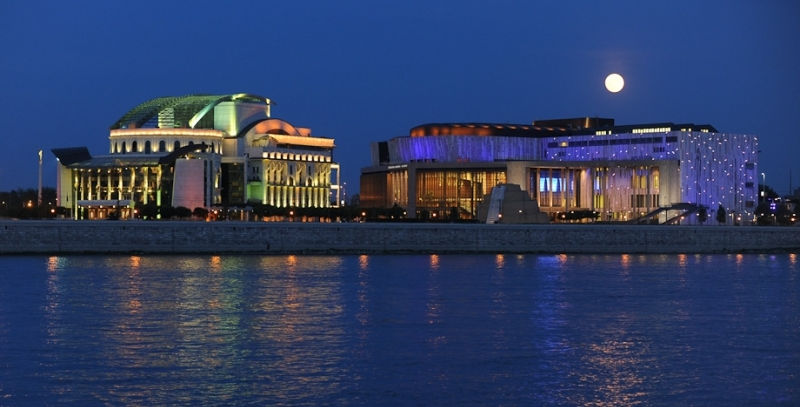


Contemporary Tour in Budapest





Caminaremos
junto al Danubio para realizar un innolvidable tour

Andrea today in Budapest, maybe the most important city in central Europe, what general description can you give me of this beautiful city?
Budapest, as you know, is the capital city of Hungary, famous for its churches, its impressive Parliament built in a neo-gothic style, the castle that overlooks the city and its bridges over the Danube. The city is characterized by eclectic, neo-gothic buildings and often also Art Nouveau and Art Deco structures that mix with each other creating a combination of elegant buildings, some in excellent conditions and others in a state of decadence.
This sounds like it’ll be a marvelous scenario for us to begin our tour in…
Indeed, and my specific proposal is to do a contemporary route, going over a little bit more than a century. For our first step, we’ll start from the Liberty Bridge, a steel bridge built between 1894 and 1896, designed by Jámos Feketeházy and opened in 1896 by the Emperor Franz Joseph The elegant bridge is hanging over four pillars and in every pillar, there is a statue of “Turul”, which is the mythical bird of Hungarian conquerors very similar to the eagle.
It is undoubtedly a bridge like no other, but now I want you to show us a memorable piece of what Budapest can give between the old and the modern.
We will find it precisely at the end of the second phase, but first we’re arriving to the Fovan Square (Fővám tér) which is right next to covered market, extraordinary by the way and very interesting. Starting off from the square we are going to walk along the Danube from the Salkaházi Sará pier and we’ll soon be arriving to Balna (The Whale). Balna is an outstanding example of restoration, industrial recovery and contemporary architecture, combining the old with the new to obtain a very harmonious and successful ending. This restructuring was pioneered by the Dutch architect Kas Oosterhuis who managed to fuse two warehouses from 1881 with an enormous steel and glass structure that, observed from the other side of the river, seems like a stranded whale between these late 800’s warehouses. Balna is a space for shops, bars, clubs and showrooms dedicated to contemporary art and especially in summer, it will be difficult to find a table in the bars that are located in the lower level with river view.
Andrea, Balna is a visually impressive building! But, I also know that Budapest is one of many European classic art epicenter, am I correct?
No doubt about it! Then from Balna we carry on to the third phase walking through Gizella stny, a pedestrian street that goes along the river, we go through Nehru Park in order to get to Millenium City, where we’ll find MUPA (Palace of Arts, the National Theater and a strange Ziggurat). The complex of MUPA contains the Ludwig Museum of Contemporary Art, the National Philharmonic Orchestra, the Béla Bartók National Concert Hall and the Hungarian National Ballet. As a Palace of Arts, MUPA is very interesting culturally and is unparalleled in central Europe and from an architectonic point of view, even though it offers some prominent solutions in its interior I don’t find it particularly interesting, but without a doubt it is a very suggestive place at night time thanks to its lighting. Next to MUPA is the previously mentioned National Theater, built in 2002 this building seems more or less kitsch and without any artistic value, and a Ziggurat surrounded by an evergreen labyrinth is between MUPA and the National Theater, which is also kitsch and lacking any artistic value but unlike the theater, I find this one funny and weird, once you go up the upper part of this conical pyramid you can enjoy of a splendid view of the city and the Danube.
Andrea, this has been a little big tour where we have seen what this great city has to offer, we need more hours and more days to talk about other treasures in the Hungarian capital, and we’ll undoubtedly discover them in the next interview.








